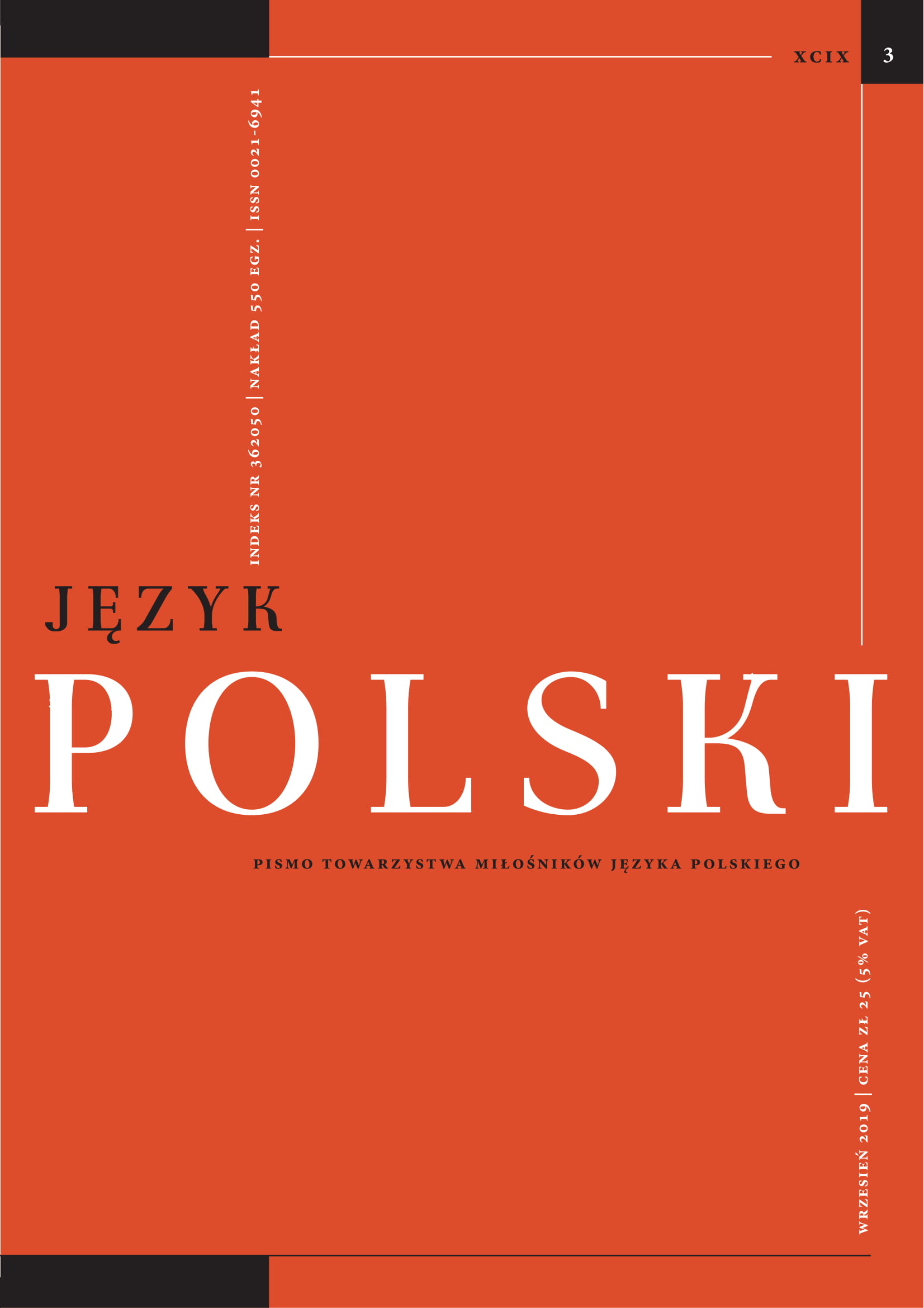Z badań nad zjawiskami słowotwórczymi i adaptacyjnymi w „najmłodszej polszczyźnie”
From research on word formation and adaptive phenomena in the “youngest Polish language”
Author(s): Andrzej S. DyszakSubject(s): Theoretical Linguistics, Applied Linguistics
Published by: Towarzystwo Miłośników Języka Polskiego
Keywords: youth slang; word formation; neologisms; borrowings; appeal; compression
Summary/Abstract: The subject of the research are neologisms selected from the online dictionary Vasisdas.pl. The majority of them are word-formations from native words. The remaining group of the analyzed vocabulary are formations from foreign words, mostly from English, which are both the result of adaptation and derivation. Their characteristic feature is a graphic-phonetic form, resulting from the acquisition of the pronunciation of a foreign word, recorded in accordance with the phonetic principle of Polish spelling. Among word-formations with native foundations, there are also slang words that are homogeneous and homophonic with appropriate words of standard Polish or professional words, but they are difficult to consider as neosemantisms. The lexical material under study has the biggest number of affix formations. In their construction, the most frequent are suffixes, but there is a noticeable lack of nouns derived from verbs with endings -nie, -enie, -cie. The word formation turns out to be a living way of multiplying the dictionary of contemporary colloquial Polish, and the neologisms in the “youngest” Polish language testify to the (word-)creative inventiveness of young Poles.
Journal: Język Polski
- Issue Year: 2019
- Issue No: 3
- Page Range: 18-31
- Page Count: 15
- Language: Polish

